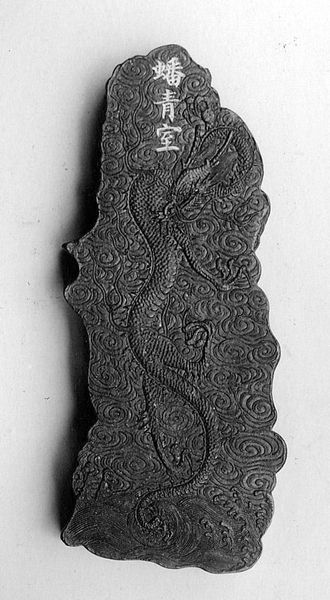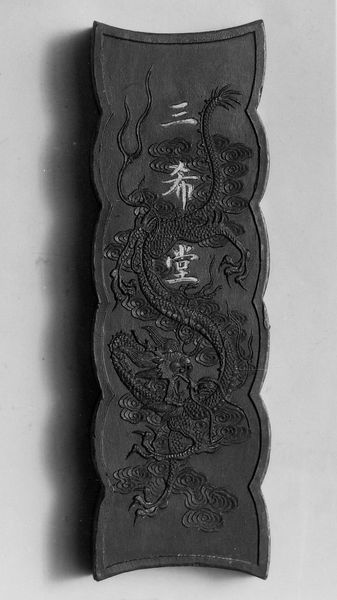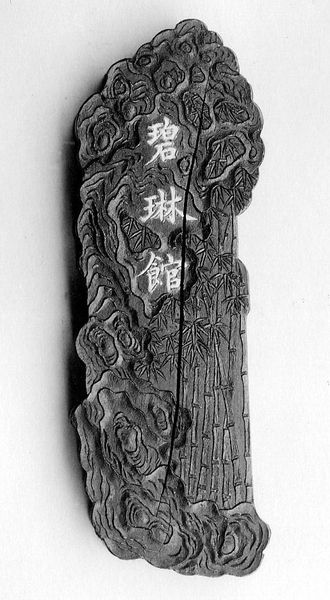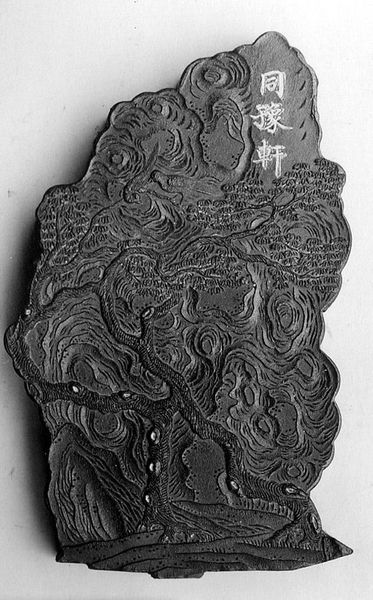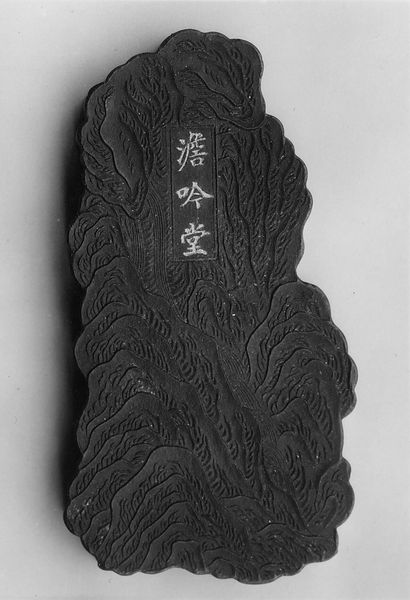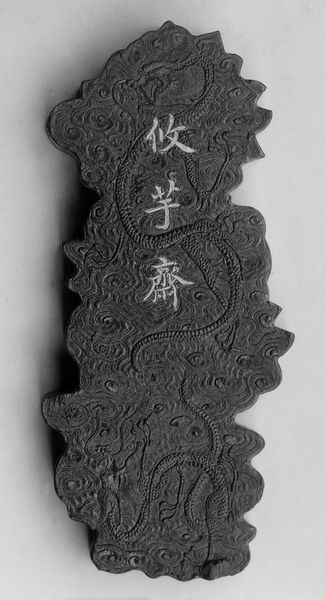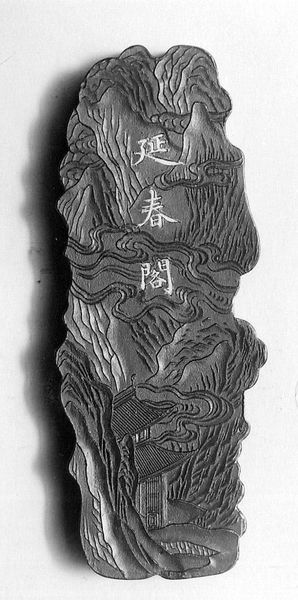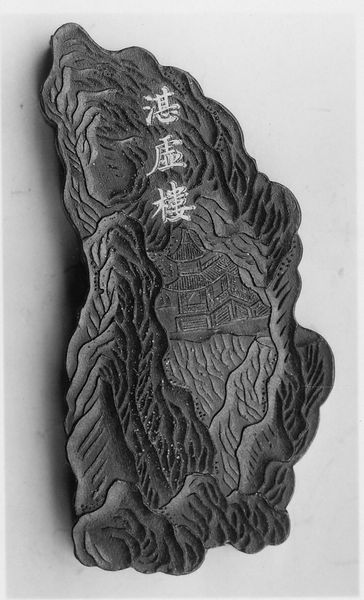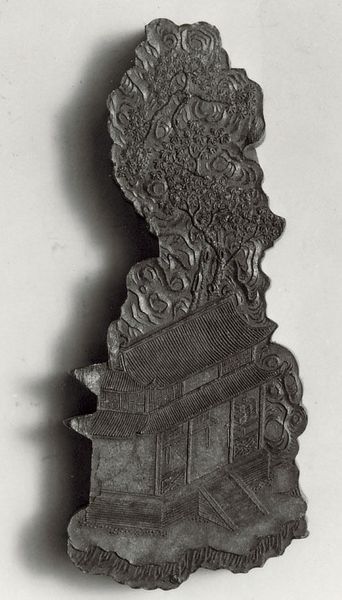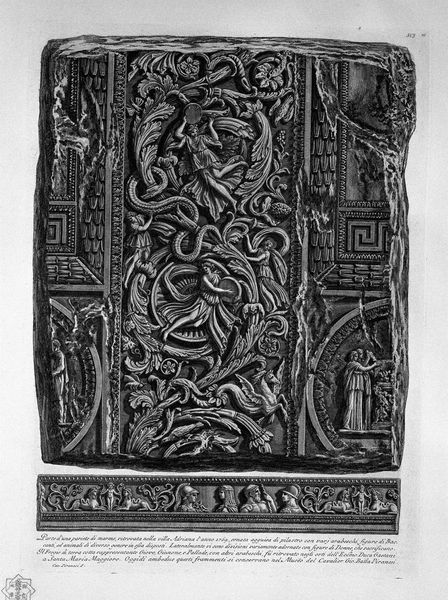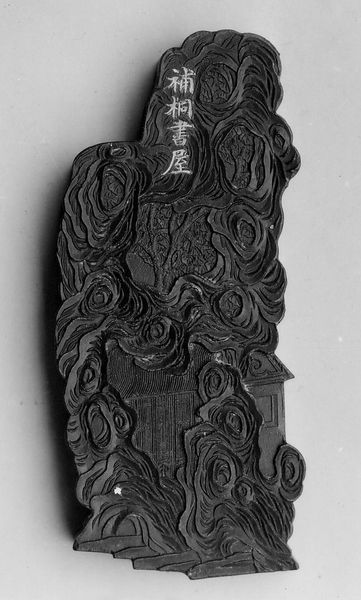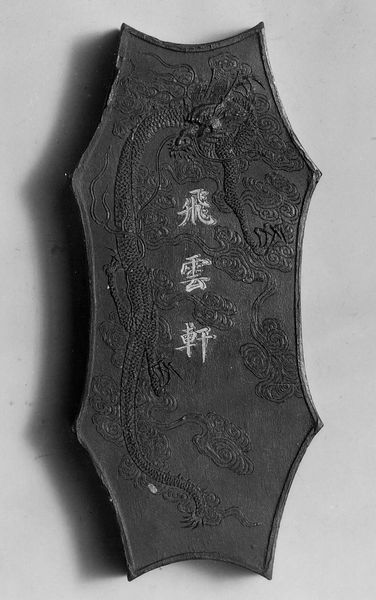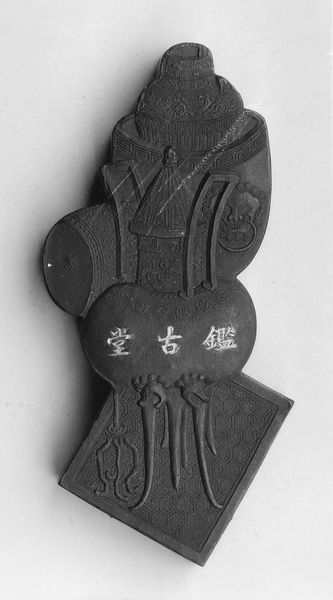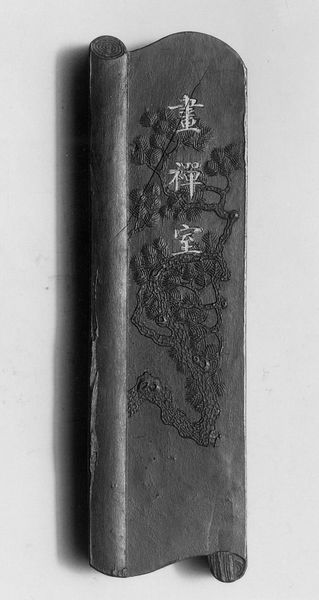
carving, relief, ink, sculpture
#
carving
#
sculpture
#
asian-art
#
relief
#
ink
#
sculpture
#
orientalism
Dimensions: H. 3 3/8 in. (8.6 cm); W. 1 5/8 in. (4.1 cm)
Copyright: Public Domain
Editor: We're looking at "Cherishing Elegance Studio," a carving from sometime between 1871 and 1933 by Jian Guzhai. It’s made of ink and is considered both a carving and a relief sculpture. I'm struck by the intricacy of the dragon; the texture against the cloud-like background is very compelling. What do you see in this piece, from a formalist perspective? Curator: The dynamic interplay of positive and negative space is immediately apparent. Consider the sinuous line of the dragon as it weaves through the cloud motifs. Observe how the artist utilizes varying depths of relief to create a sense of depth and movement. It seems almost as though it is meant to convey tension via that contrast. Does that resonate with you at all? Editor: It does, particularly where the dragon curves, there’s a real sense of push and pull in those contours. What about the choice of material, the ink? Curator: The use of ink as a sculptural medium is crucial. Its inherent darkness allows for a heightened emphasis on the sculpted forms, and its texture introduces another layer of tactile complexity. Do you see how the artist plays with light and shadow on the surface, almost exploiting how they are intrinsic to sculpture to shape its inherent form? Editor: Yes, the subtle gradations of shadow really do enhance the three-dimensionality. Curator: Precisely. We can understand how formal choices like these converge to create meaning within the work. What began as craft becomes much greater with its material value transformed by artistry. It is that exact synergy that creates, for me, great sculpture. Editor: So, paying attention to line, space and shadow gives access to an entirely fresh viewing? I appreciate this breakdown, thank you. Curator: My pleasure, a fresh viewpoint can really create greater understanding.
Comments
No comments
Be the first to comment and join the conversation on the ultimate creative platform.
